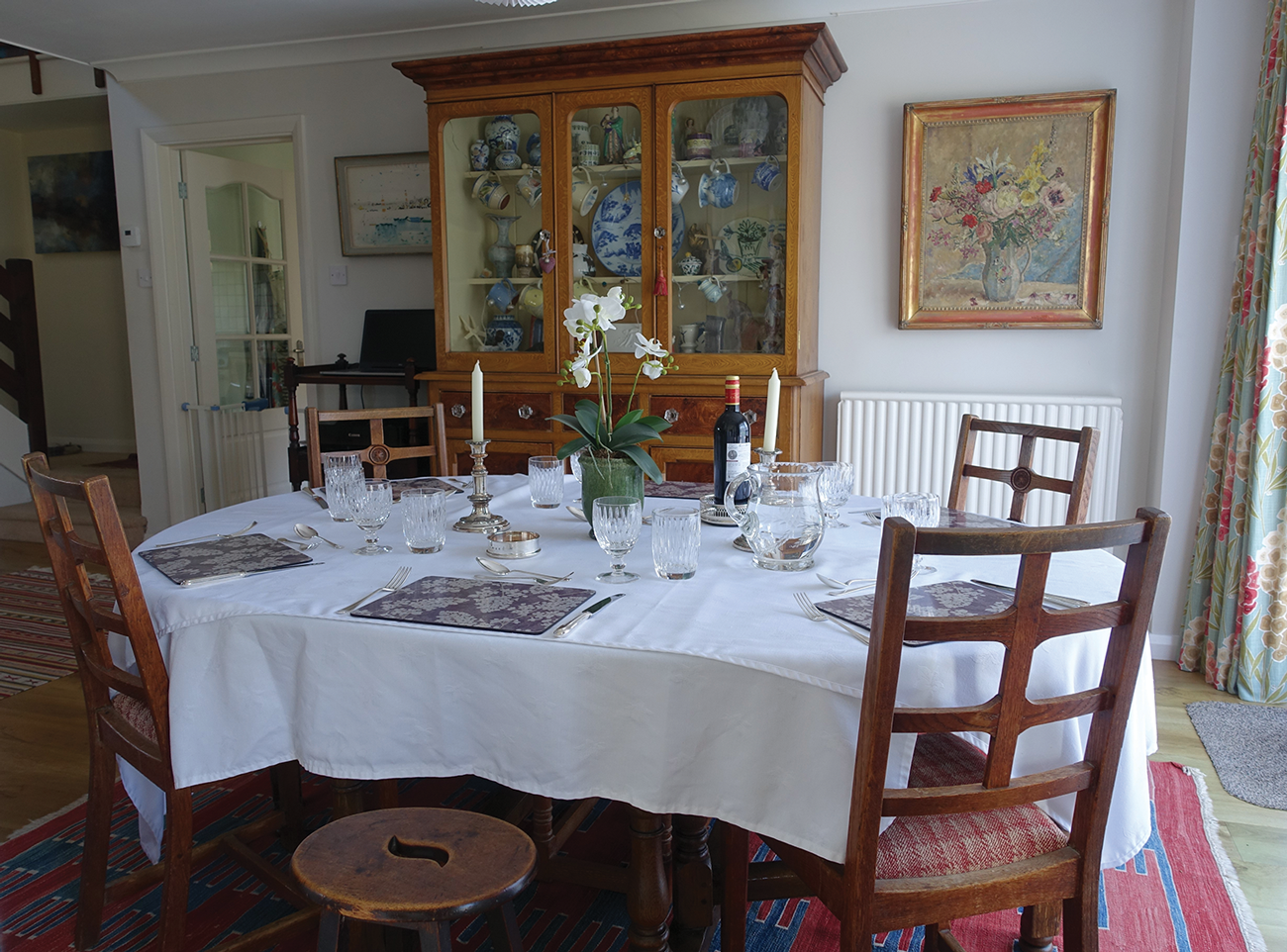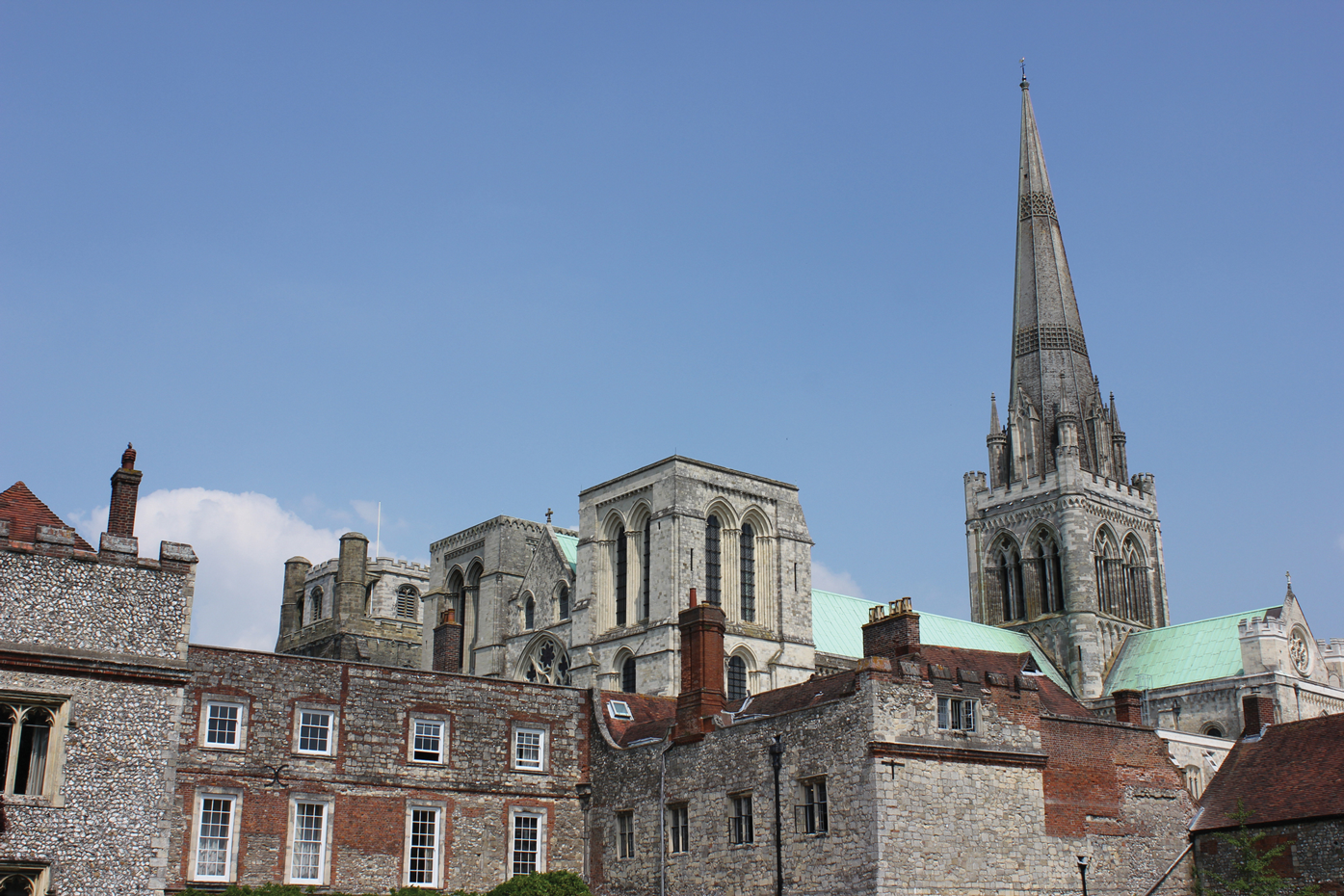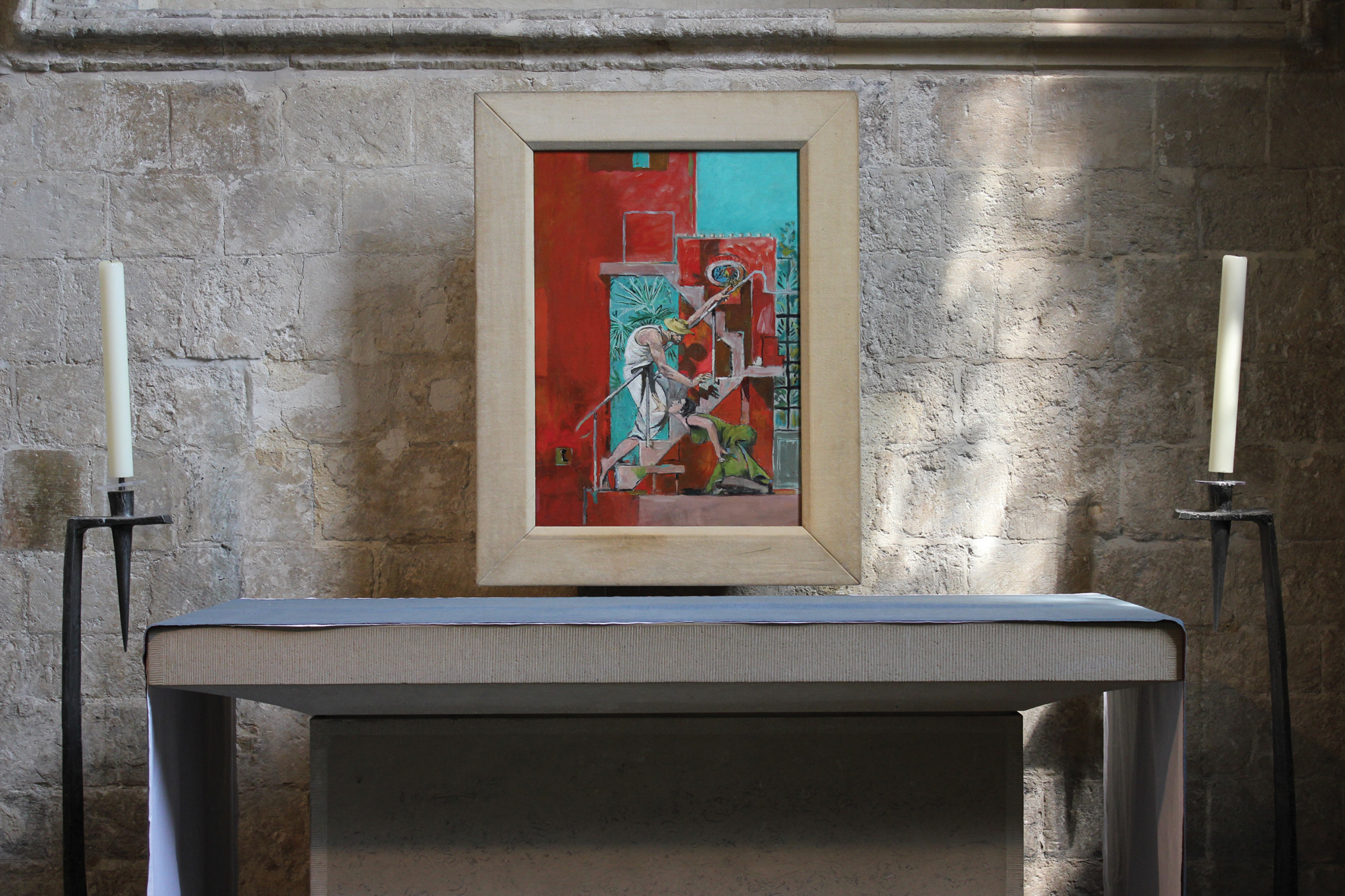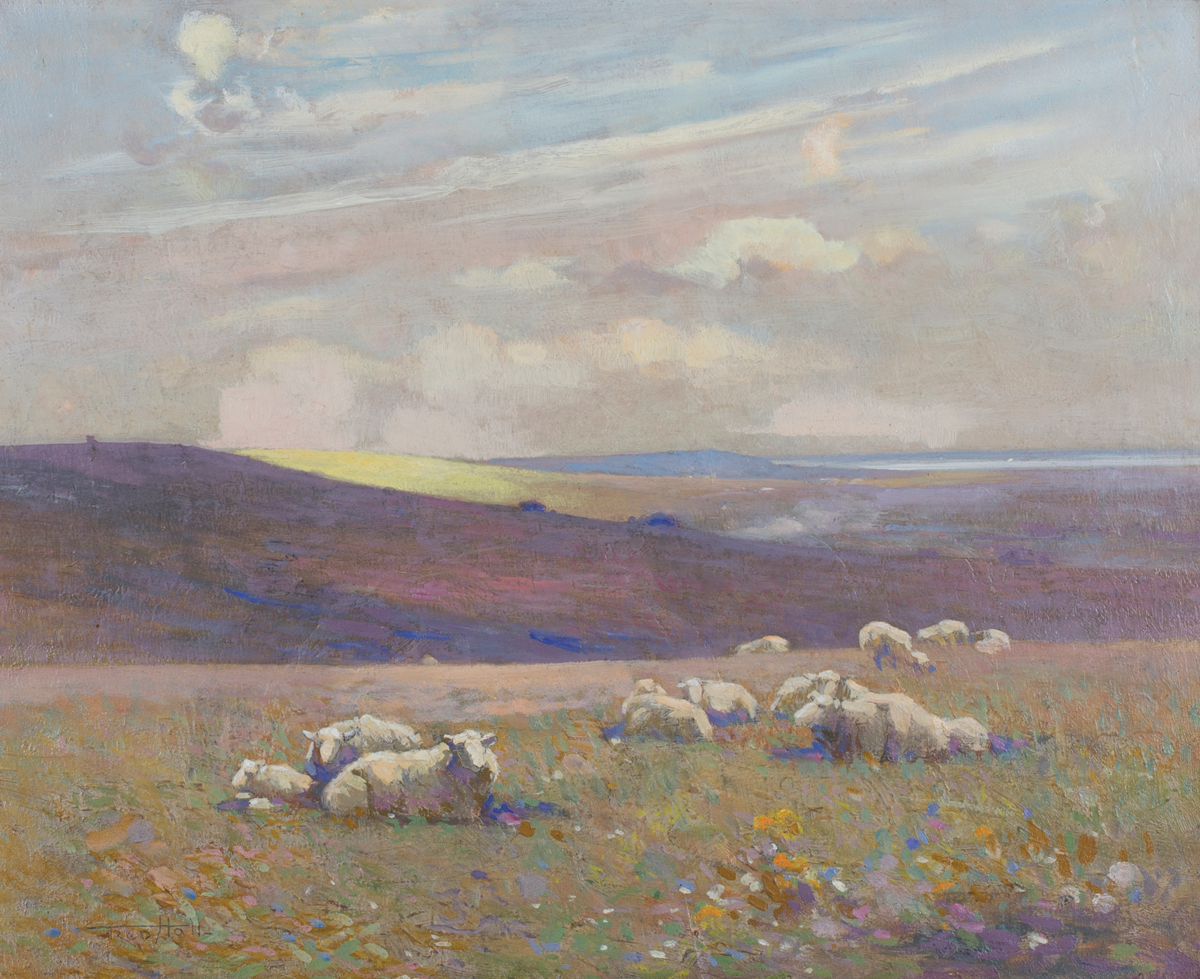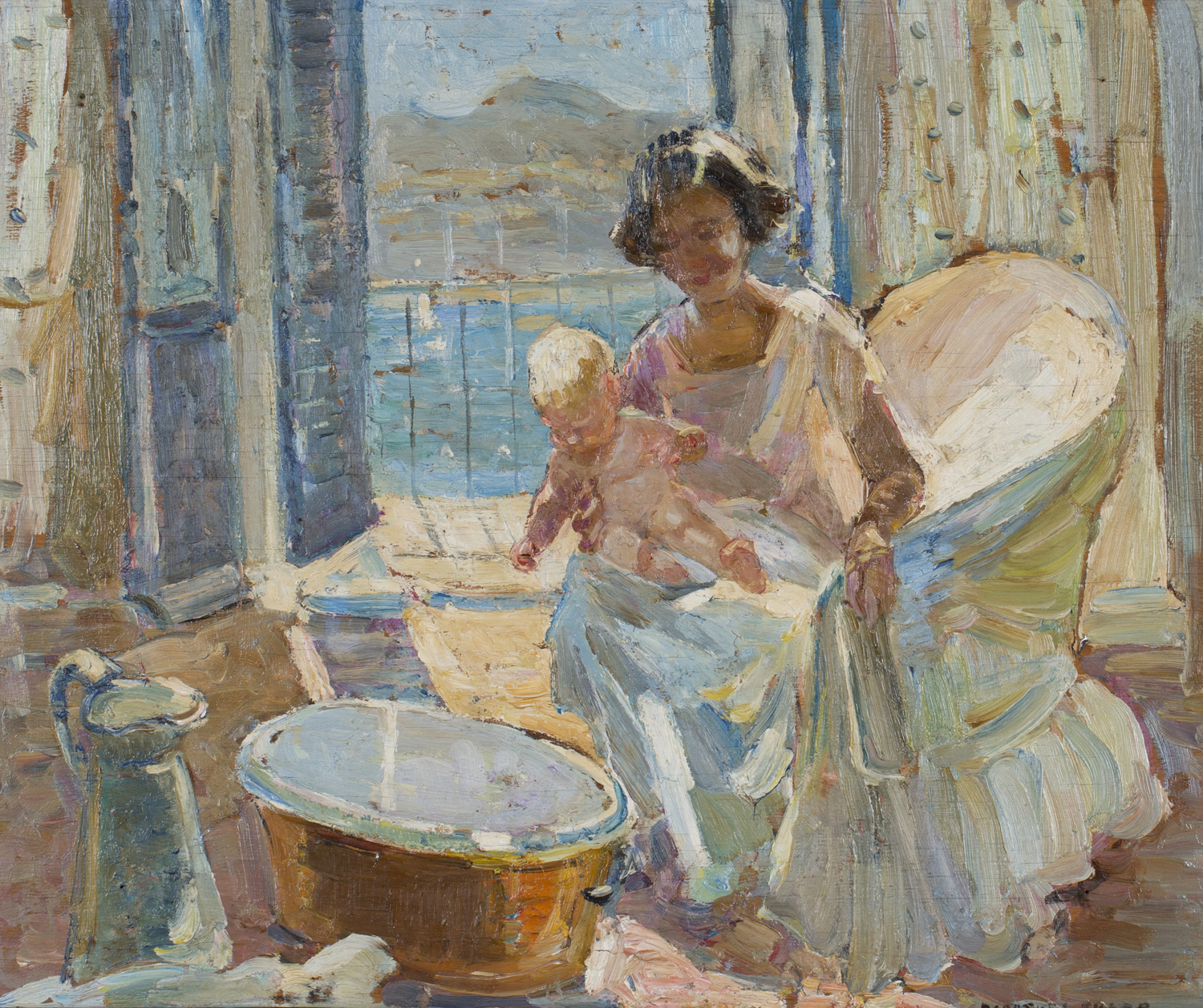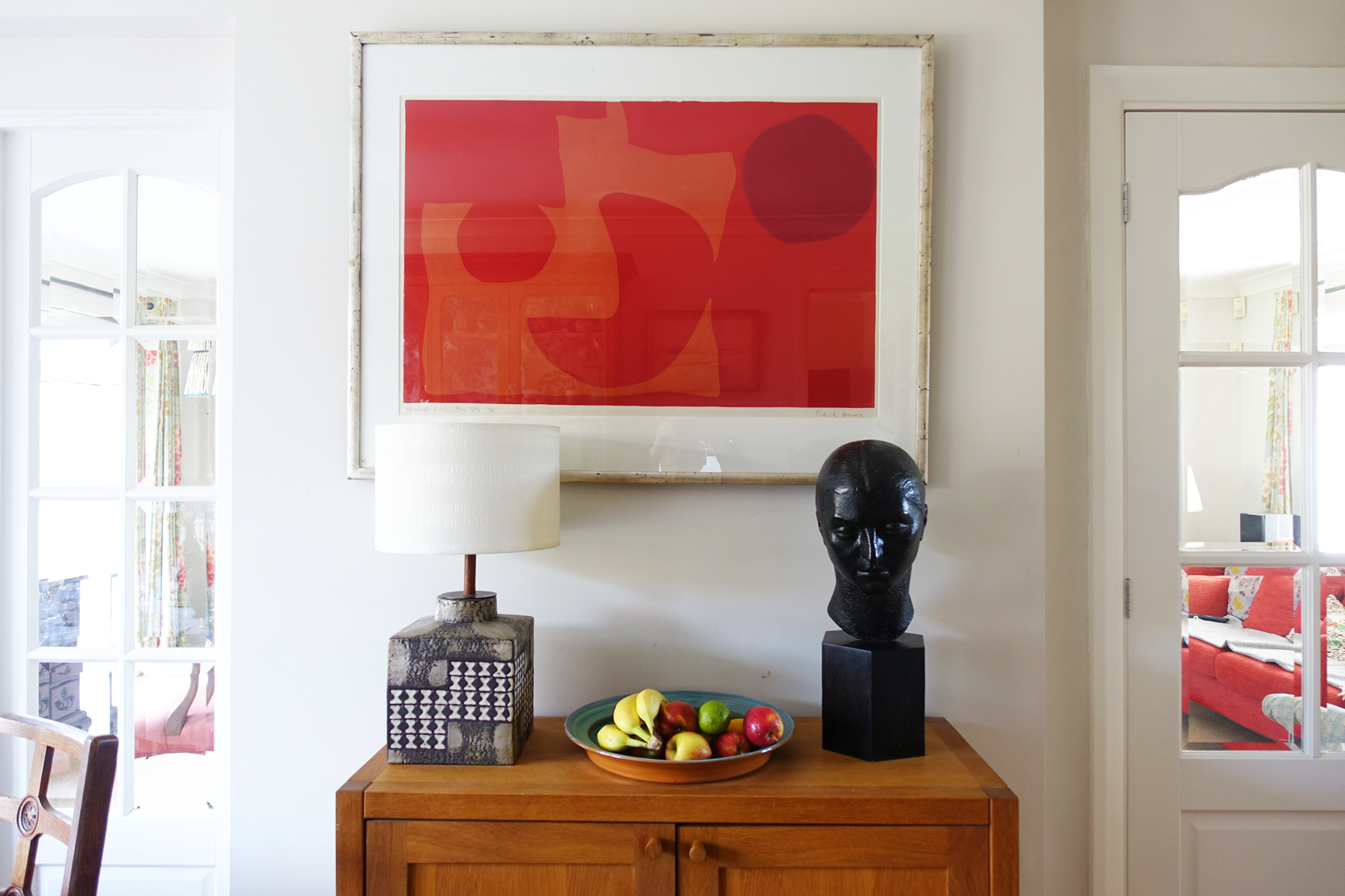
Our homes are important to us and English Country House taste reflects our nation. We have always embraced the ‘modern’ over the centuries whilst, of course, keeping one eye on the past. After all the English are a processional people – we celebrate the past as we confidently embrace the future. And English Country House taste is not provincial but international reflecting our nation’s global, outward facing, mercantile character.
This week I am returning to the 1970s home of two Sussex collectors where, in an eclectic interior, old meets new.
The contemporary oak cabinet is undemanding of our eye, rather it provides the basis for a composition of objects. Texture and colour are at the heart of English taste. Here a Provençal earthenware bowl filled with fruit is framed by a 1970s Scandinavian Arabia ceramic table lamp of geometric design, and a bronze bust by the anglicised Jewish Estonian artist Dora Gordine (1895-1991). Dora Gordine drew inspiration from the post-impressionist sculptor, Aristide Maillol. A contemporary of Jacob Epstein, Gordine inspired the famous British sculptor Anthony Caro. The bust dates from 1928 and depicts a woman called Clarette Feron.
The drama of Patrick Heron’s screenprint ‘Winchester Red I’ from 1968 displays the utter confidence of this important British modernist artist and art critic.
Patrick Heron (1920-1999) was inspired by Henri Matisse. He shared Matisse’s obsession with colour, rhythms, patterns and tone inspired by the natural world.
In 1956 Heron moved to St Ives in Cornwall joining a colony of modern British artists. The Cornish landscape and environment inspired his art throughout his life and career.
‘Winchester Red I’, although abstract, is trying to find a visual equivalence for the shapes and forms we experience in nature. The reds change radically in their relationship to one another affected by the shifting light in this room. Like the sun breaking through scudding clouds it expresses the rhythm of light and shade in the landscape. Heron’s vocabulary of colour is very much his own. He challenges our imaginations to experience something beyond our immediate perception and to renew our understanding the world.
Similarly the shared experience of Covid-19 and being at home is challenging all of us to reassess our engagement with the world and our communities – to rediscover what is truly important and enough. Amongst those I speak to virtually and encounter whilst exercising and observing social distancing there is growing desire for change born out of the shared experience of Covid-19. The conversation is hope filled and speaks with a common voice. It talks of family and community, of fairness and opportunity, of care for others, a celebration of the example, courage and compassion expressed by all those working in our NHS, and a recognition of the importance of those working on our local newspapers, our farms, in our supermarkets, in manufacturing, the bin men, delivery drivers and post office workers. There is a real and determined sense of a need for rebalancing and renewal in our nation with strong servant leadership to enable us to work together for the common good.
The world will not be the same after the experience of Covid-19. We are a processional nation so I hope and pray that with one eye firmly on the past we will celebrate and renew all that is good in our nation whilst we confidently embrace the future.
